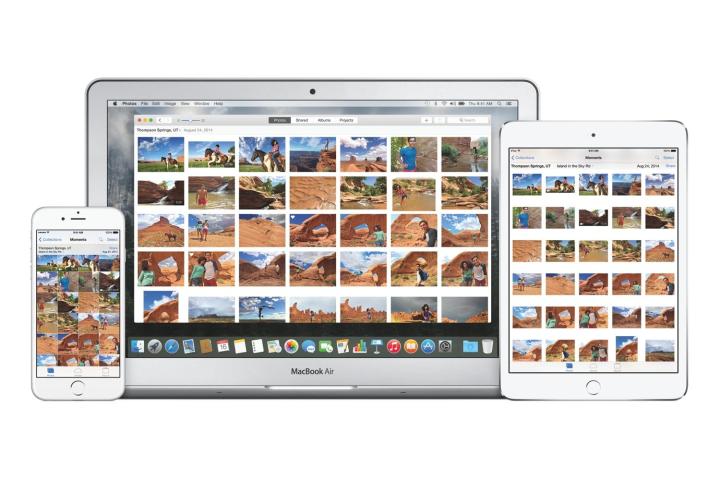
Gone are the menus and sidebar of iPhoto. Photos has a more streamlined user interface that mimics the Photos app for iOS, so it should be a no-brainer to pick up. Like its iOS counterpart, photos are sectioned into Moment, Collections, and Years (instead of Events, Photos, Faces, and Places), but you can organize further by using tags. You can still do one-touch auto enhancements, but there are now editing tools that let you fine-tune the adjustments, like color, light, black and white, levels (with histogram), white balance, definition, and vignette. Photos are non-destructible, so you can always revert back to the original.

If your computer is synced to iCloud, you’ll have access to your photos stored in the iCloud Photo Library – stuff shot on an iPhone or iPad. You can access all your photos and videos from one place, regardless of the device you are on. It’s not a new concept, as you can do that with the likes of Flickr or Dropbox, but it finally ties all of Apple devices together. This means that any changes you make on one device will be shown on another, whether it’s an edit or a new folder.
With iCloud, there’s also an option called “Optimize Mac Storage.” When enabled, all original, full-resolution images and videos are stored in iCloud, while a low-res version is saved on the desktop (it’s similar to what Adobe does with Lightroom). This frees up room on your Mac, but iCloud only offers 5GB of free storage, so you’ll likely have to upgrade for more cloud space.
Photos is an improvement over iPhoto, but Aperture users (if they haven’t defected to Adobe Lightroom) will find some of the robust features they’re used to. It’s not Photoshop, but Photos has the aforementioned tools to do some basic editing. Photos also supports uncompressed RAW images. You can apply filters for a unique look, or use Smart Sliders to easily and quickly perfect image quality. Compared to Aperture, Photos has a noticeably uncluttered interface.

As with iPhoto, Photos lets you create printed matter like photo books, cards, calendars, and prints – all with Apple aesthetics.
Photos is free, and it’s available when you update Mac OS X; it’s not available as a standalone download. Over the years, we’ve found ourselves using iPhoto less and less, but we’ve become accustomed to Photos on iOS, so making the transition should be easy. The question is whether Aperture users, which are generally more advanced users, will like the replacement, or find it too simplistic for what they need.
Editors' Recommendations
- Developers help older Macs do something Apple won’t allow
- Apple just gave you a reason to ditch your Mac for an iPad
- 7 new Macs are coming in 2022: Here’s what to expect first
- Apple’s iMac Pro could get an all-powerful 12-core chip
- Update your Mac now to fix vulnerability that gives full access to spying apps


